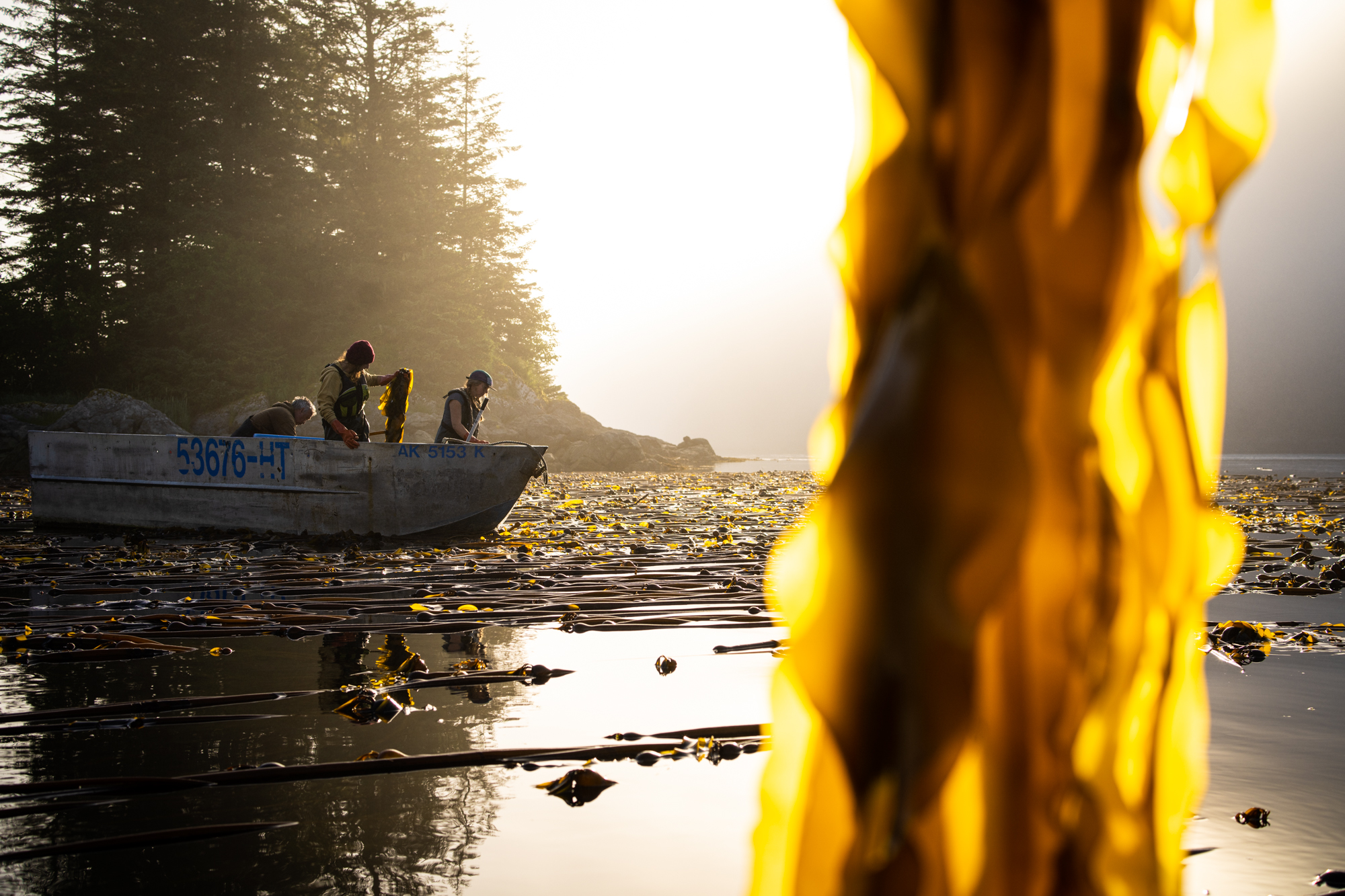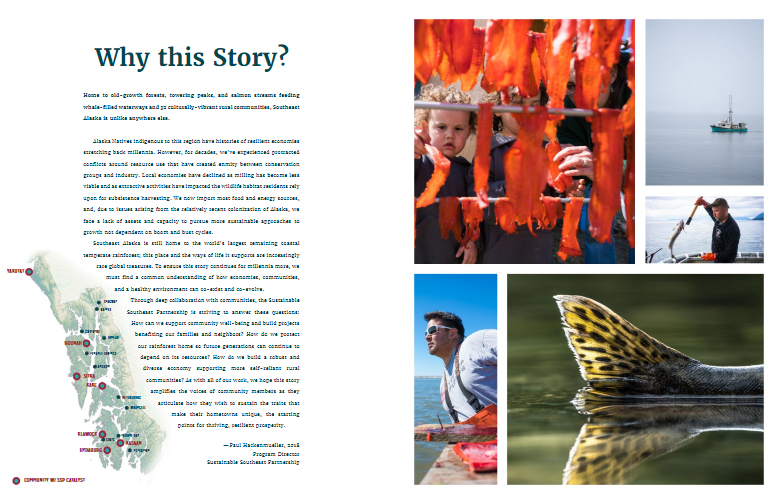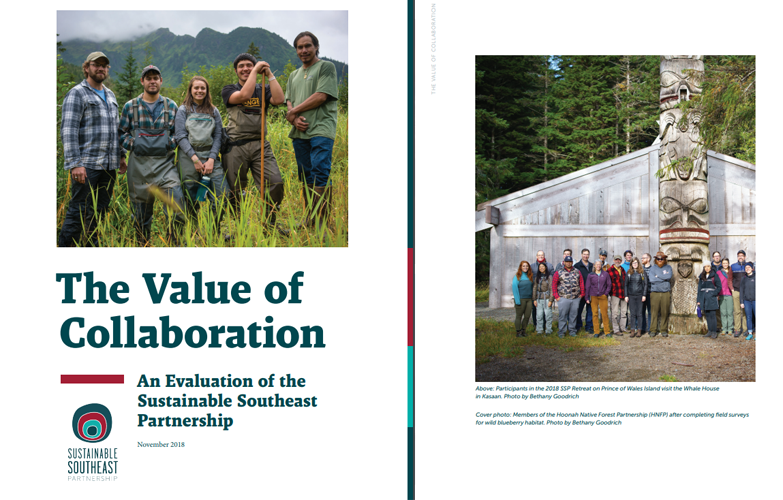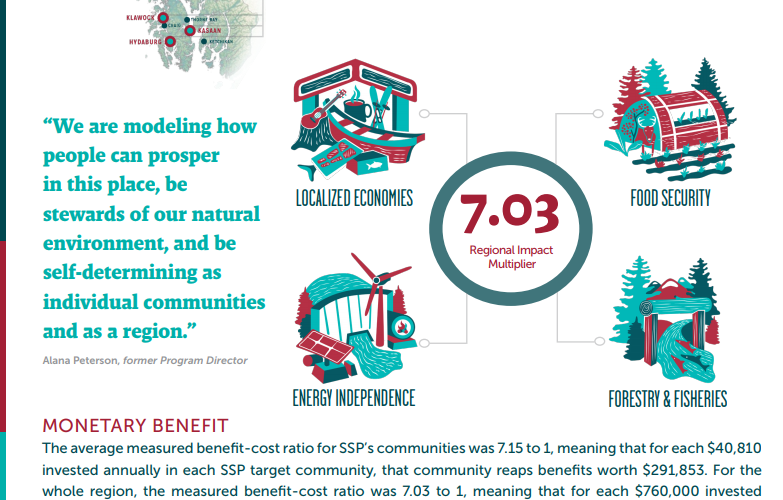Archives: Publications

Cost-Effective Kelp Drying Methods for Remote Alaskan Communities
Barnacle Foods
Kelp farmers in rural communities in Southeast Alaska face a number of difficulties in getting their kelp to market in an affordable and market-ready manner. It is difficult for farmers and industry members to find clear and concise information about kelp drying and stabilization methods, with many methods being unsuitable for a rural farmer’s needs. This is the second in a set of reports that outlines current drying methods for seaweed and methods that are best suited for rural farmers.

Gulf of Alaska Fisheries Limitation Study
Koniag, Sealaska, The Nature Conservancy, Rasmuson Foundation, Spruce Root, SSP
This study investigates the socioeconomic and cultural impacts of fisheries access limitation programs, such as limited entry and individual fishing quotas (IFQs), on Alaska Native villages in the Gulf of Alaska. The research documents how these programs have altered local economies, disrupted cultural practices, and contributed to outmigration.

Woven: Peoples & Place, Issue 01, 2024
Bethany Sonsini Goodrich, Lee House, and Shaelene Grace Moler
Built entirely in-house by our growing storytelling team, Woven: Peoples & Place is our love letter to the Sustainable Southeast Partnership because as storytellers, we have seen and reported on the positive life-changing impacts of this work for many years. We believe in the power behind these stories and hope that you will too. These stories and voices are connected because we are connected: woven together we are strong.

Possible Futures for Southeast Alaska
by Spruce Root and REOS Partners for The Sustainable Southeast Partnership
The Scenarios for the Future of Southeast Alaska are stories about what could happen in Southeast in the future, from 2025 to 2050. They are not stories about what will happen (forecasts) or what should happen (a vision). The purpose of these stories is to offer a shared language for talking together about what is possible and what must be done.

Catalyst Directory
Updated Annually, 2024
Sustainable Southeast Partnership Catalysts represent communities and areas of expertise and collaborate regularly across the region. Catalysts are ambassadors for our shared values and mission, and connect resources, people, ideas and networks. Meet the 2024 SSP Catalysts.

Balance at the Speed of Trust
Peter Forbes, 2018
This long-form narrative discusses the inception and significance of the Sustainable Southeast Partnership through history, narrative and case studies. The benefits of SSP are interdependent and rooted in complex historical, cultural, and ecological contexts.

The Value of Collaboration
Ecotrust, 2018
This report presents an impact evaluation of SSP. The outcomes and benefits of our work are identified, classified and then valued in dollar-equivalent terms. The purpose of this report was to examine and analyze, as rigorously as possible, the self-reported outcomes and benefits of participating in the network.

Impact Evaluation Summary
Ecotrust, 2018
This report presents an abridged version of The Value of Collaboration impact evaluation and provides an overview of SSP’s overarching outcomes and focus areas, the community and regional surveys, the impact multiplier, monetary benefit, and cost-benefit ratio. The evidence presented supports the conclusion that the SSP has so far succeeded in its vision in measurable was in both community and regional levels.